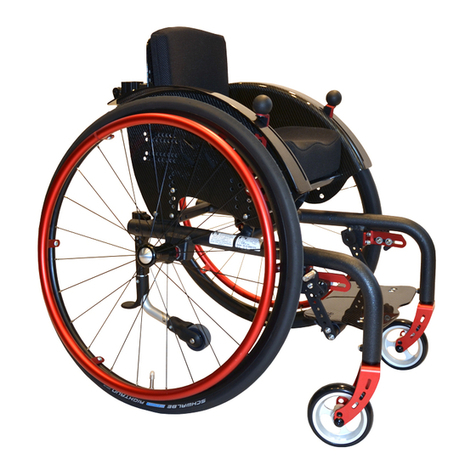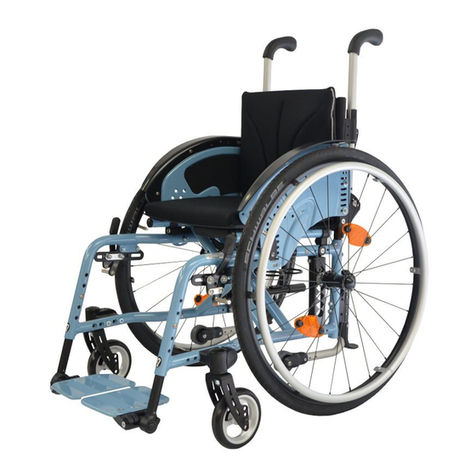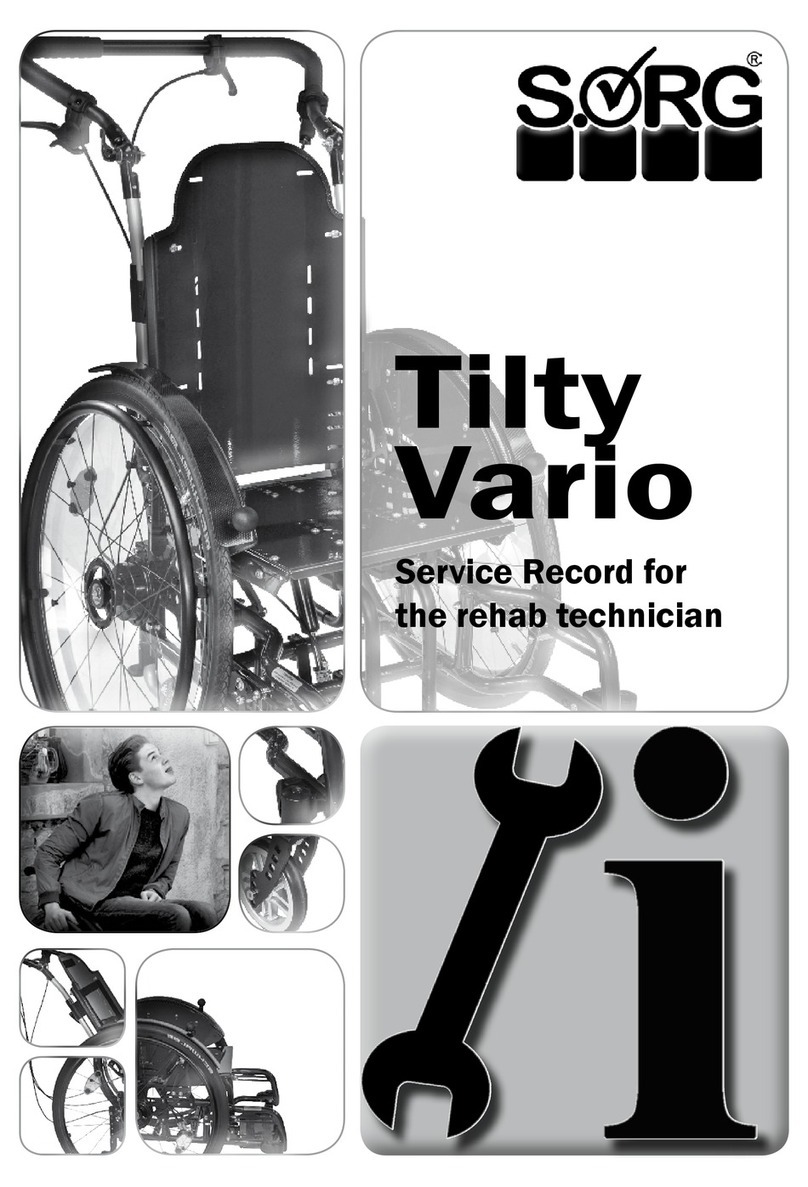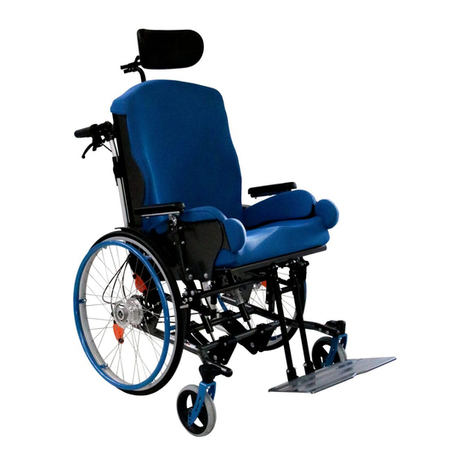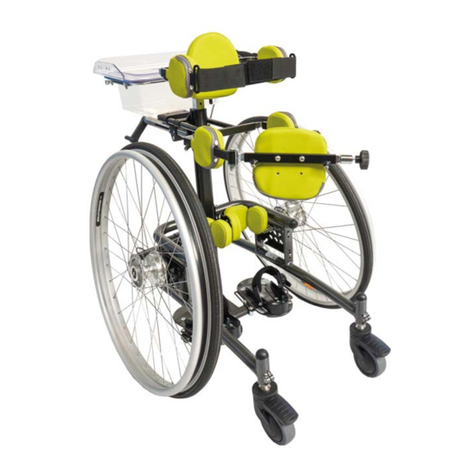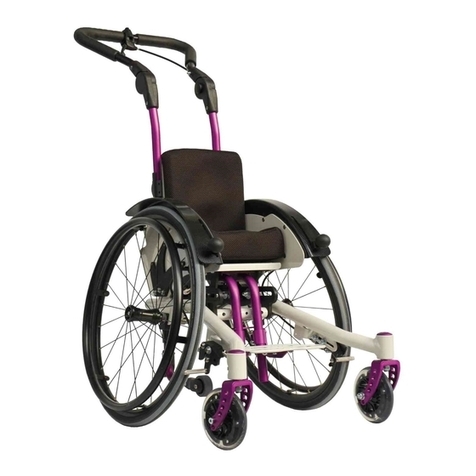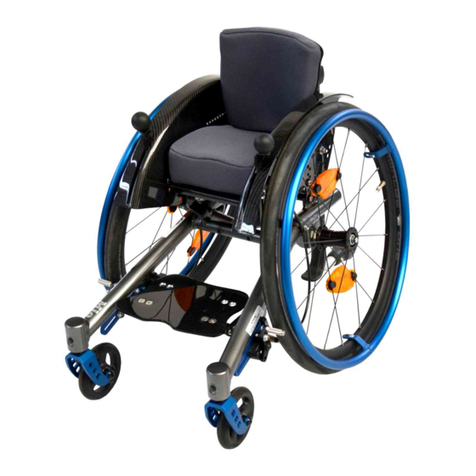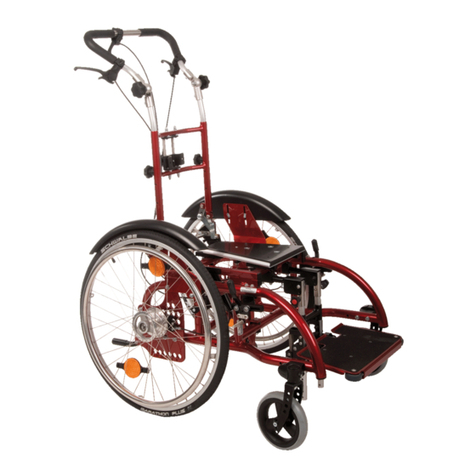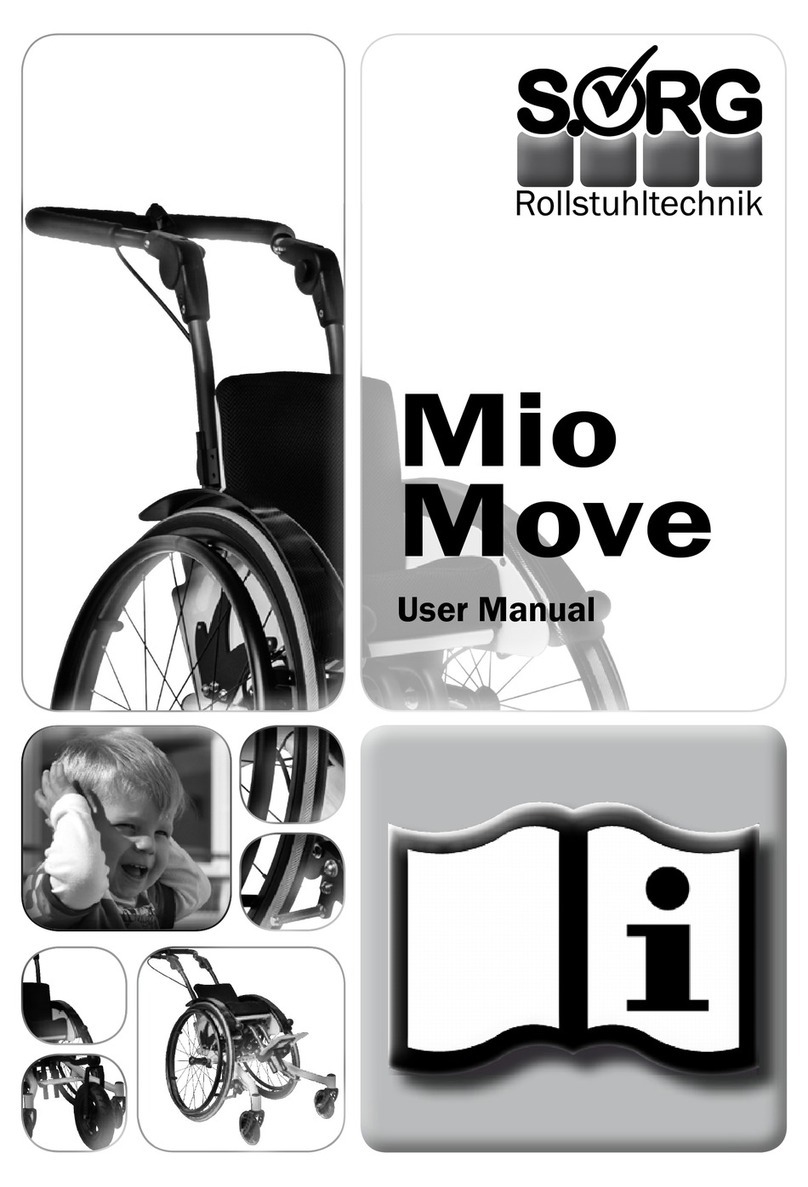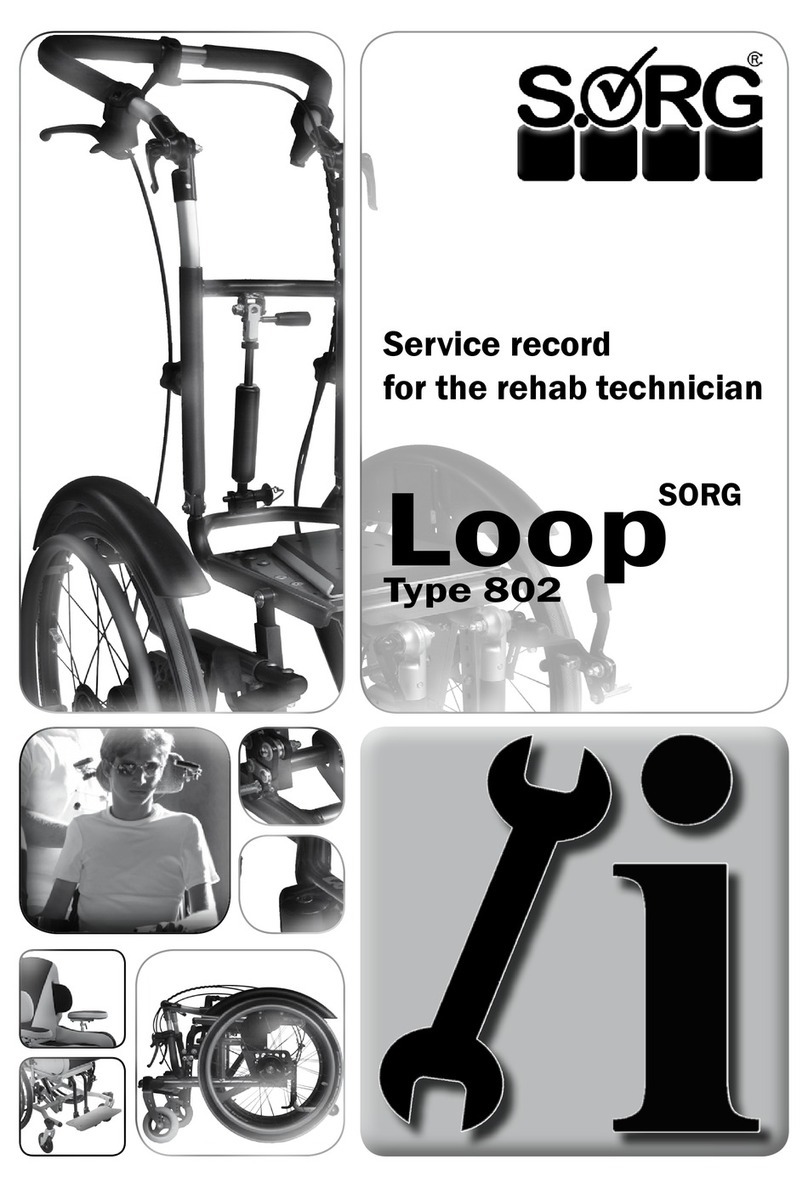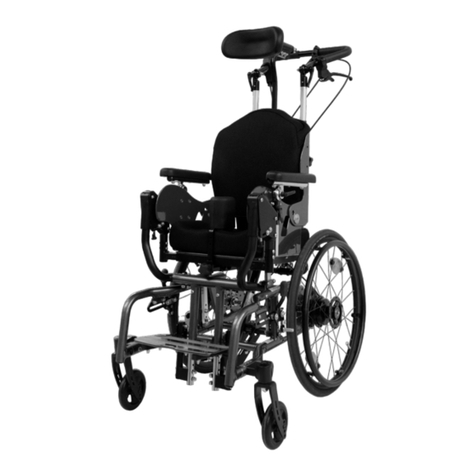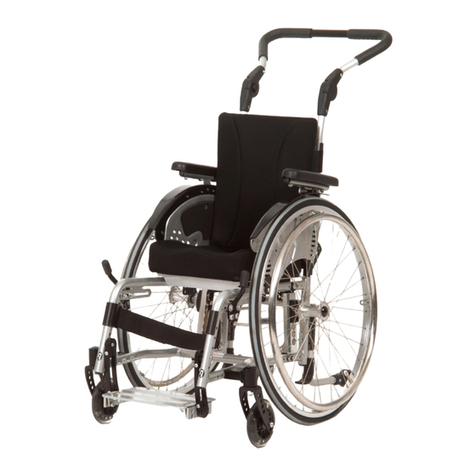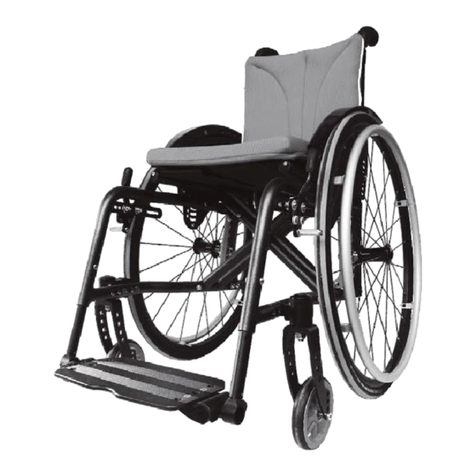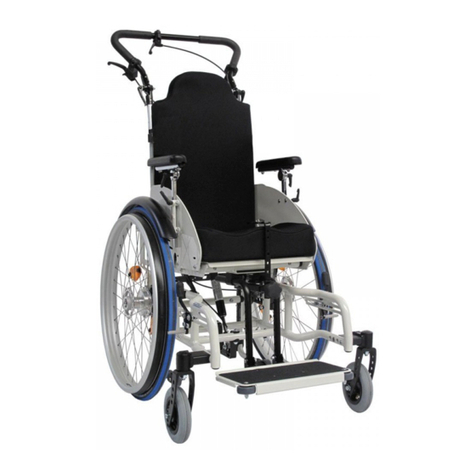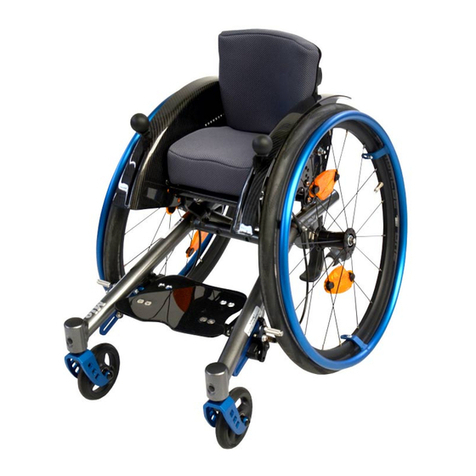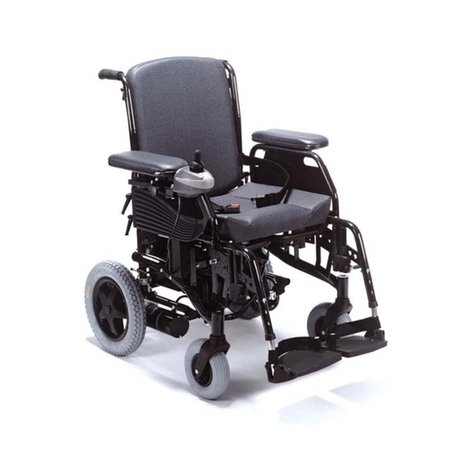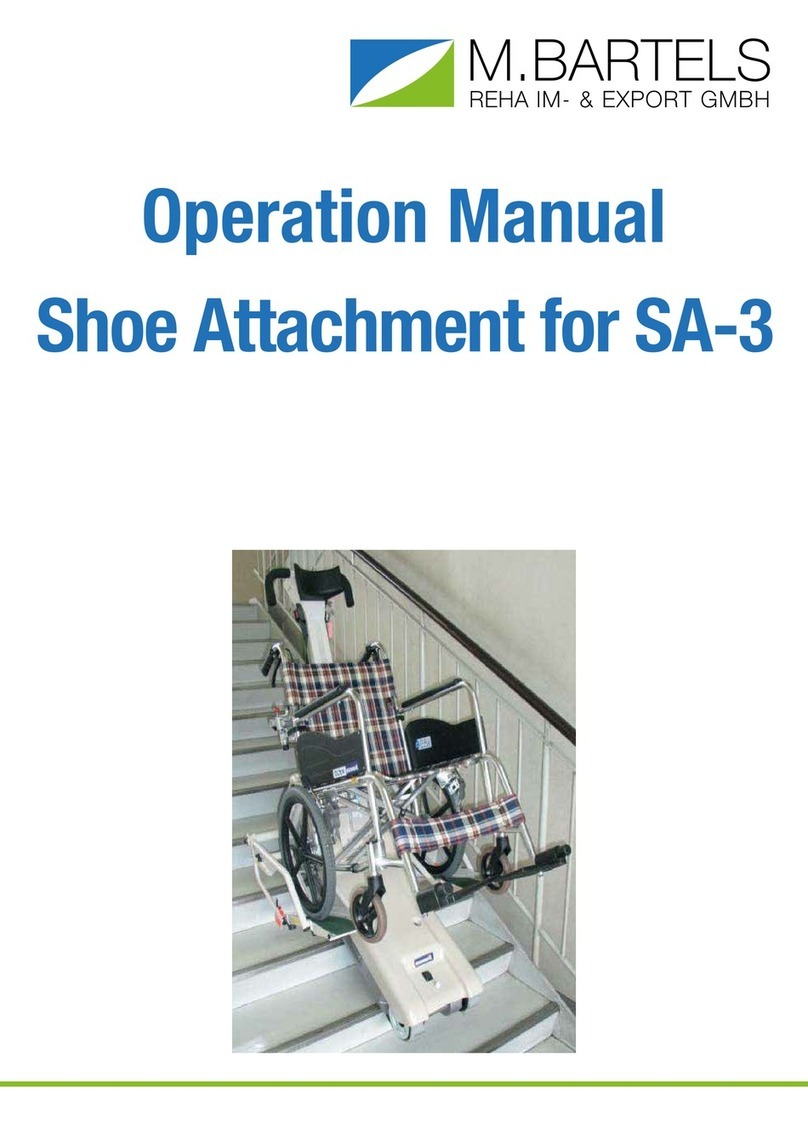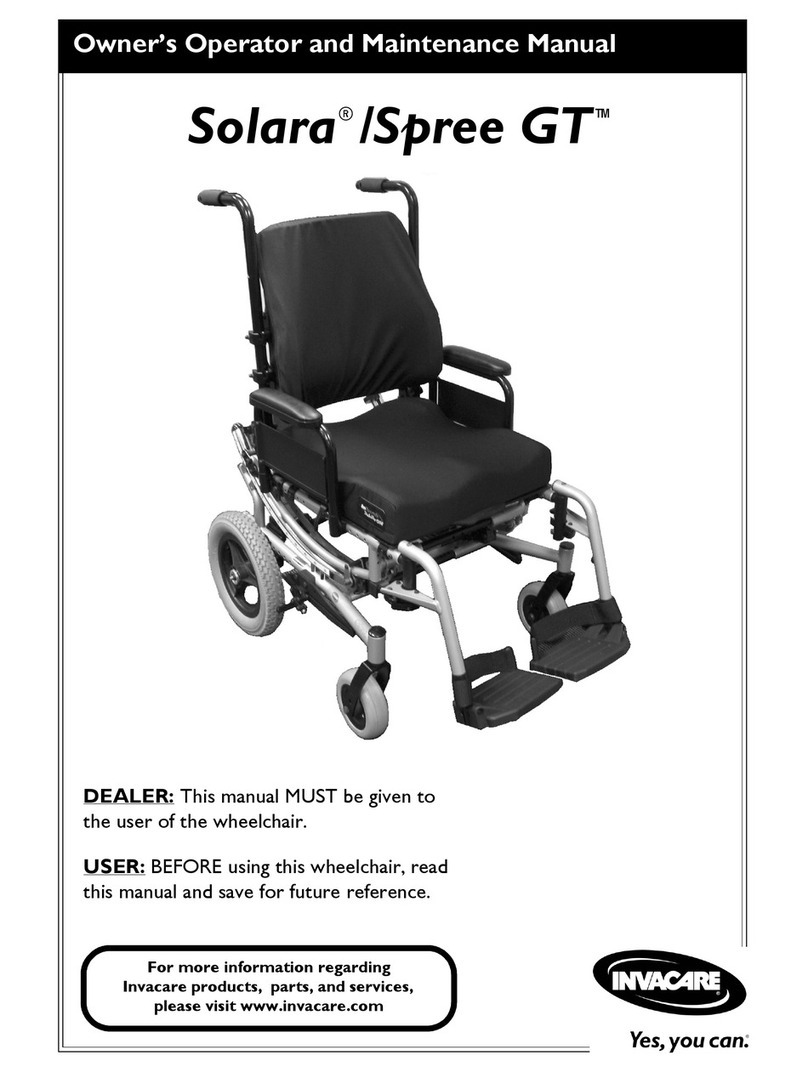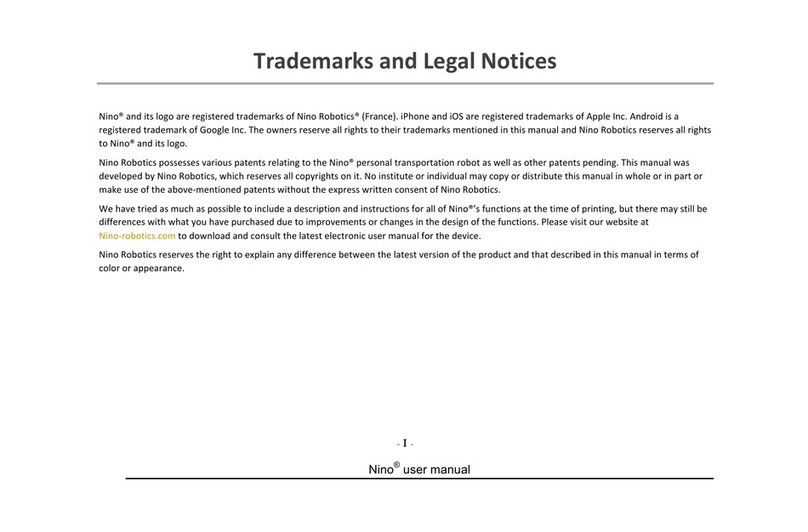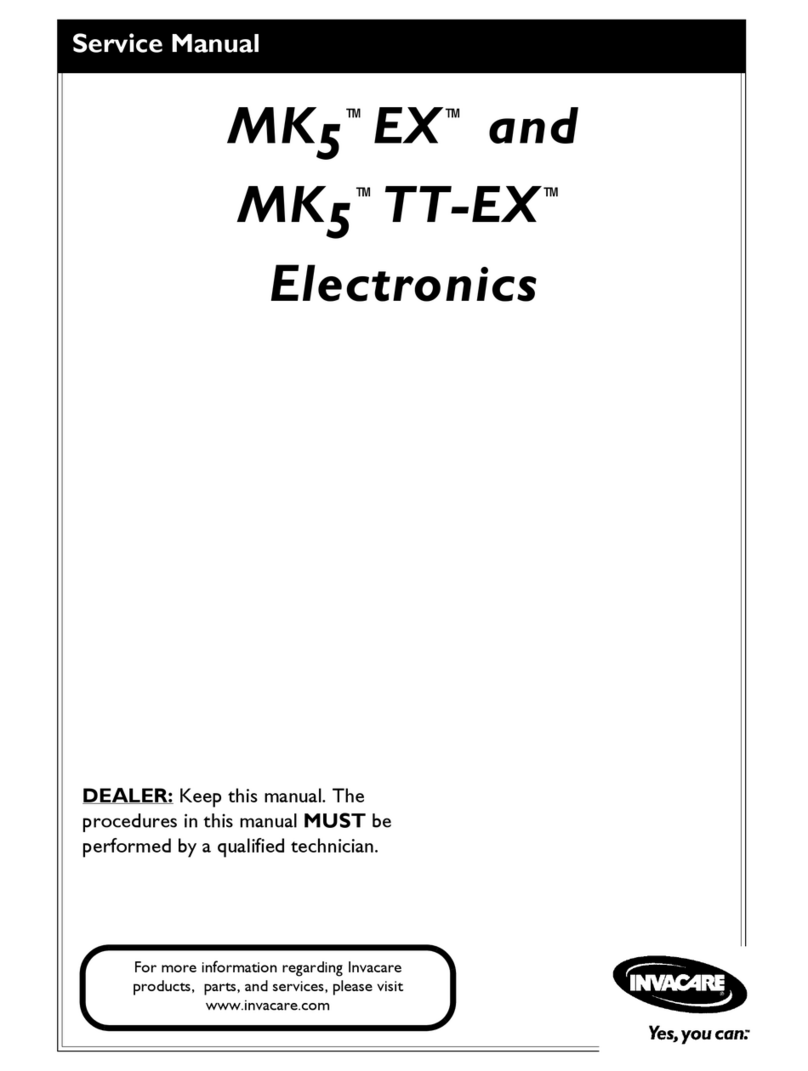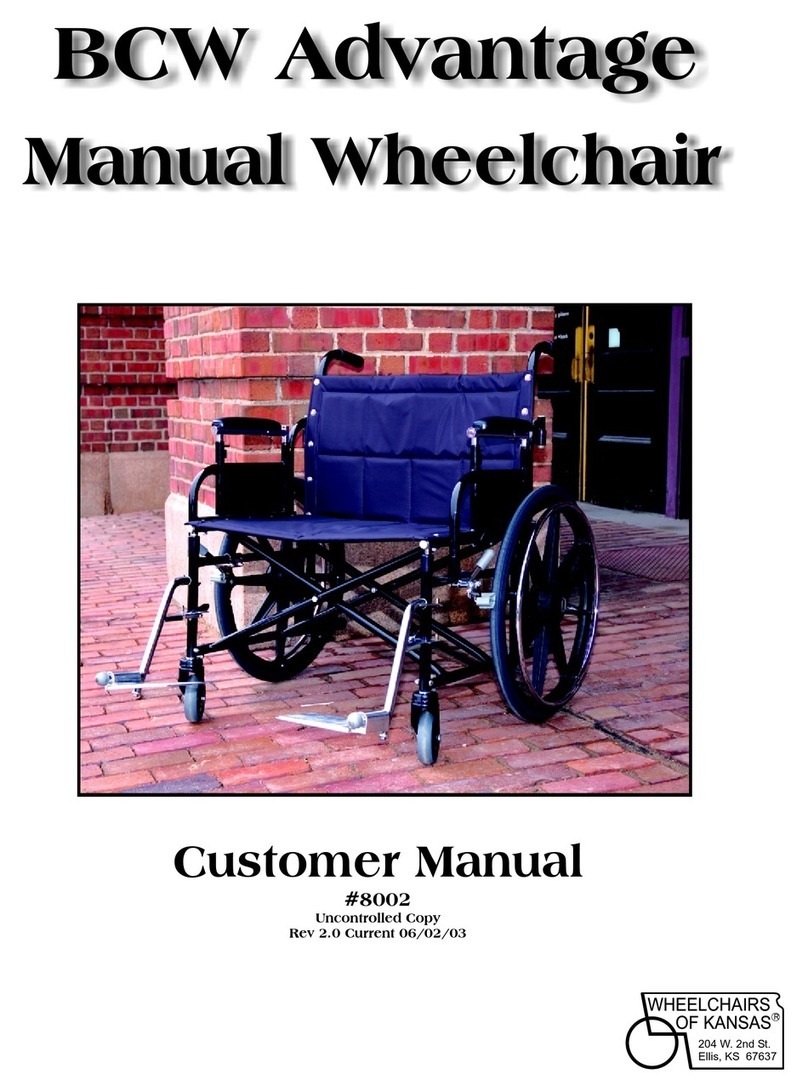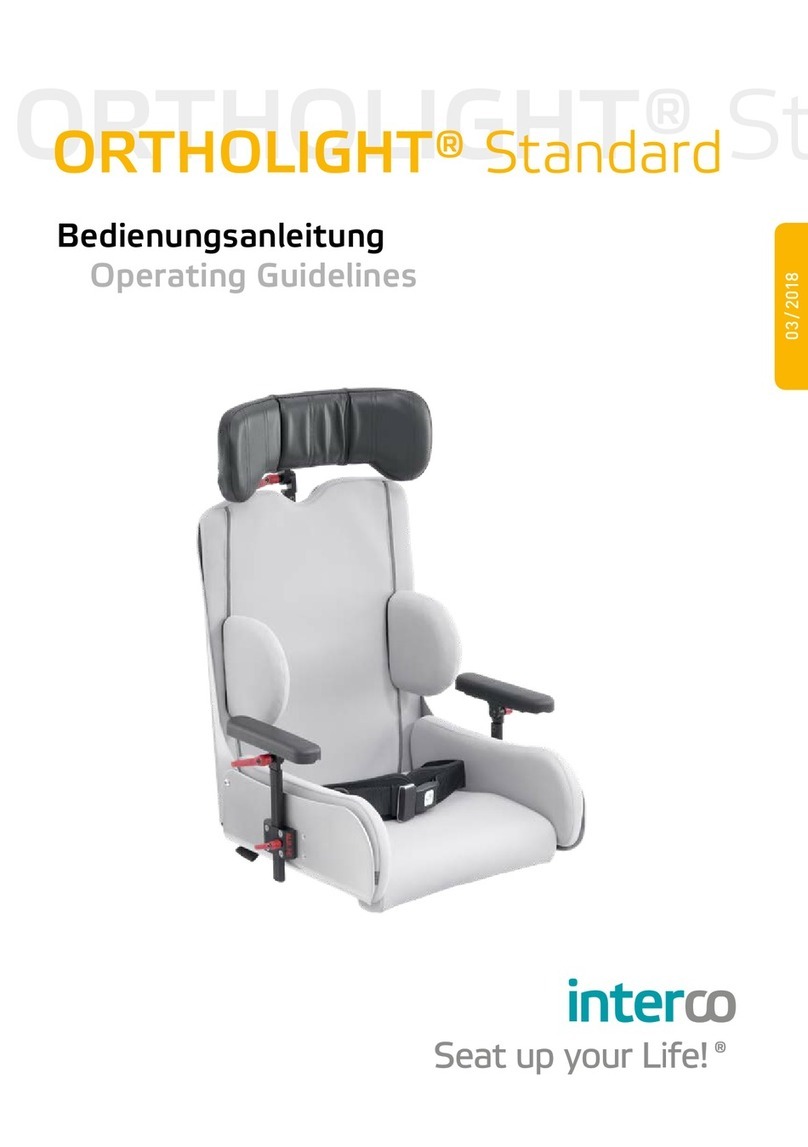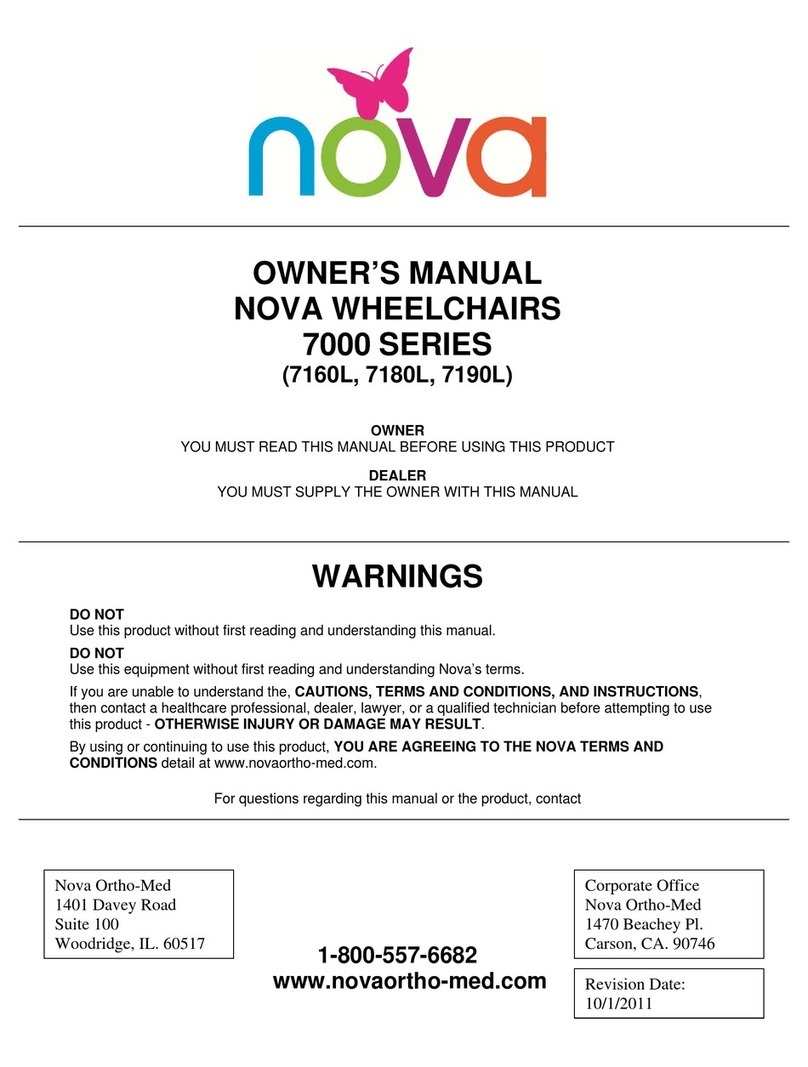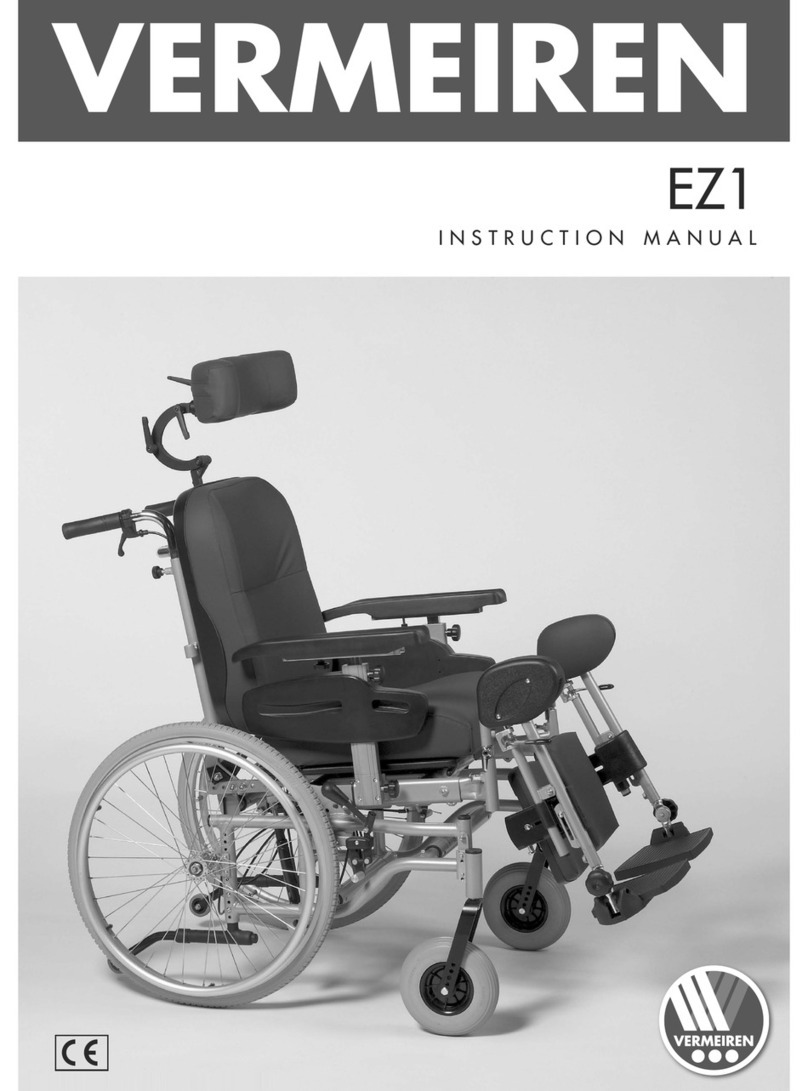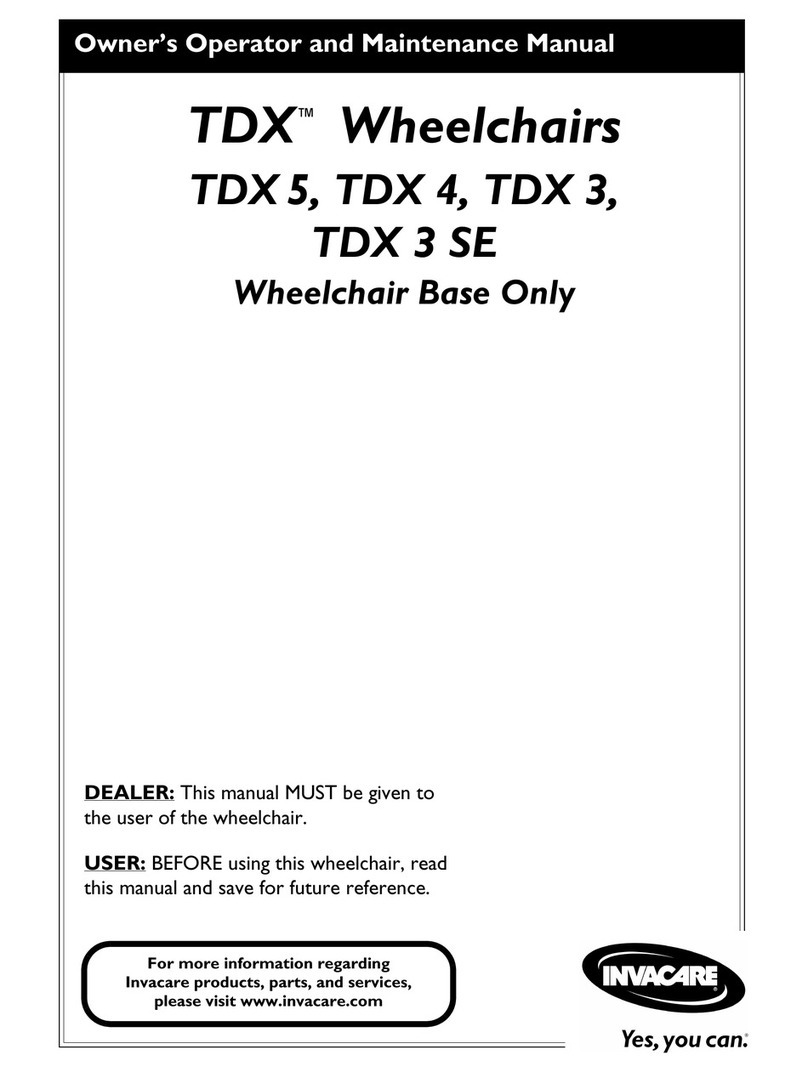6
1.7 RECEPTION
�INDICATION
DELIVERY
Each wheelchair is mounted, tested for functionality
and correctness in our works and packaged into
special cardboard boxes by our shipping experts.
FORWARDING COMPANY
For liability reasons we have to ask you to check the
wheelchair immediately after receiving it and in the
presence of the deliverer (forwarding company) for
possible damages that may have occurred during
transportation.
TRANSPORTATION DAMAGES
In case of damage, please proceed as follows:
• write a short record of the damage and review
of events, if possible include pictures clearly
showing the damage,
• get the personal information of the bearer
(driver‘s license etc.),
• inform us immediately.
�INDICATION
Do not sign the notice of receipt from the forwar-
ding company before thoroughly checking the
wheelchair for defects.
�INDICATION
According to the valid law, damages reported late
can neither be asserted to us nor to the forwarding
company!
1.8 DOCUMENTATION
�INDICATION
Keep this user manual in a safe place. Have all
work/repairs done on your wheelchair documen-
ted by the medical supply sotre in the maintenance
plan. If applicable, hand it back to your benefactor
along with the wheelchair.
�INDICATION
In the event of the wheelchair being reused, this is
an important source of information for your bene-
factor. It provides evidence of regular inspections
which might be relevant in the event of warranty
claim.
ATTENTION
For safety reasons have all repairs done and docu-
mented solely by a qualified specialized trade.
1.5 SPECIFICATION TILTY VARIO
Tilty Vario is a growable active wheelchair with tilt func-
tion for children, adolescents and adults:
• Seat height and seat position can be set,
• tilt function with gas pressure spring by 25°,
• back angle adjustement with raster from 78°
to 126°, in addition can be folded forward
• frame abducted by 10 cm
,
• back height growable by 5 cm, seat width
growable by 4 cm and seat depth growable by
4 cm without purchased parts
• various side guards (with built in cable control
among other things),
• anti-tipper,
• leg supports with continuous or divided foot
plates, mounted in the middle under the seat,
distance can be set freely, opt. can be eleva-
ted,
• steer and push aids for outdoors (Outdoor
Front End),
• positioning aids (side truss pads, abduction
wedge, anatomically formed seat unit, head
rest, telescopic back extension),
• one-hand aid (double hand rim, one-hand
steering, one-hand brake),
• legrest(s),
• suitable for setting up a seat shell,
• various driving wheels and casters.
1.6 APPLICATION
ATTENTION
The wheelchair serves solely to actively or passively
transport the person whom the wheelchair has been
adjusted for by a qualified specialzed trade.
It can be used on firm ground without any restrictions
indoors and outdoors. With suitable equipment (e.g.
Outdoor Front End) the wheelchair can also be used
on surfaces such as sand, cobblestones, gravel etc.
ATTENTION
The allowed load capacity (including seat shell if ap-
plicable) is not to be exceeded.
ATTENTION
The wheelchair cannot be used in extremely wet
surroundings (shower, sauna, etc.) or salt water nor
can it have excessive contact with moisture.
ATTENTION
The wheelchair must not be used as means of tran-
portaiton for goods, objects and the like.
INFORMATION
Please follow the care and maintenance plan
.
